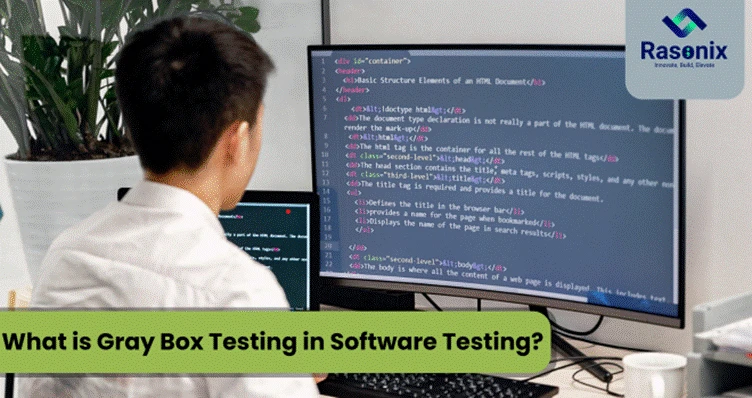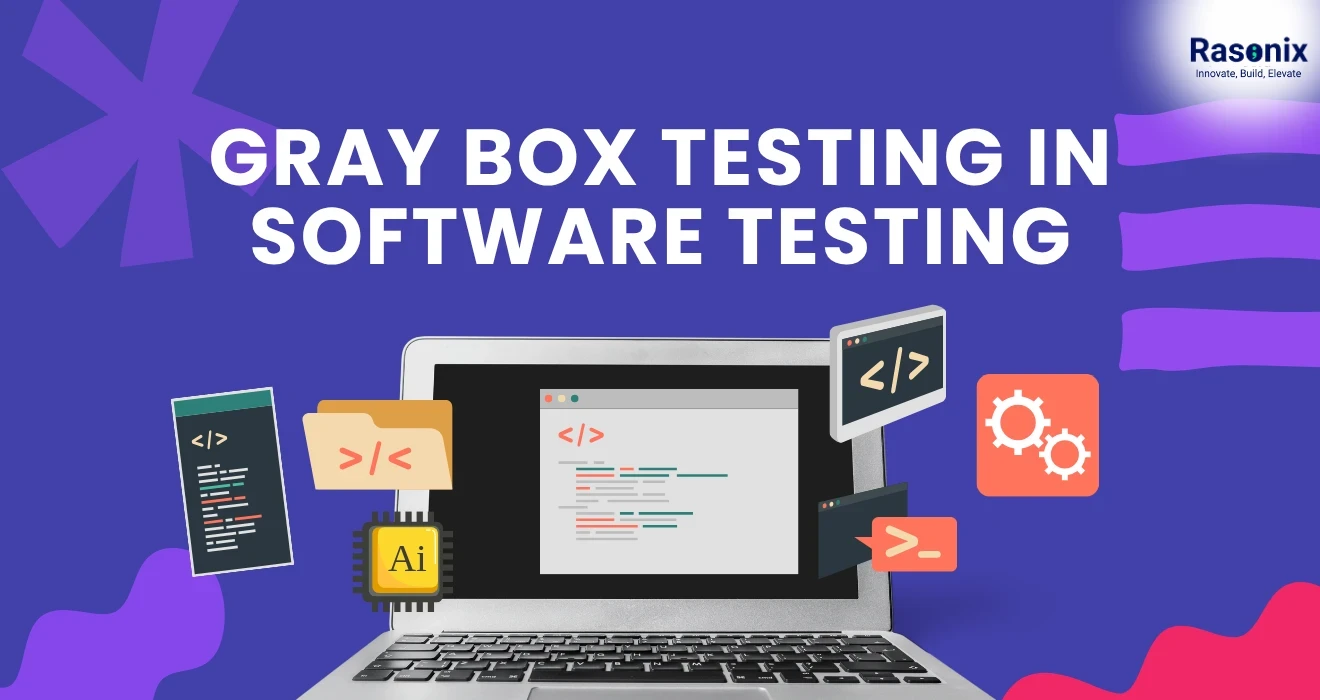If you're caught between black box testing and white box testing, you’re probably asking what is gray box testing in software testing. Think of it as standing halfway through a door, you can see parts of the room inside (code logic), but you're still observing how it behaves from the outside. That’s exactly what gray box testing does - a hybrid of both white and black box approaches.
Gray box testing is a software testing method where the tester has partial knowledge of the internal workings of the application. Unlike black box testing, where the tester knows nothing about the system’s internals, or white box testing, where everything is visible and accessible, gray box testing offers a sweet spot. It allows you to design test cases with limited information about the system’s architecture, databases, APIs, and more.
Let’s explore this testing technique with examples, comparisons, pros and cons, and why it matters in 2025.
What is Gray Box Testing in Software Testing?

Gray box testing in software testing is a technique that combines the insight of white box testing with the perspective of black box testing. Testers have limited internal knowledge, perhaps access to architectural documents, database schemas, or APIs but they still perform testing from an external perspective.
This hybrid approach helps find bugs that lie in the interaction between internal code and external outputs especially useful in web applications, APIs, and layered software systems.
This technique is also referred to as translucent box testing or semi-transparent testing.
Process of Gray Box Testing
The gray box testing process generally follows these stages:
- Requirement Analysis:
● Understand functional specifications and technical documentation.
- Partial Code Access:
● Analyze architectural diagrams, API documentation, database design, or source code snippets.
- Test Case Design:
● Use internal knowledge to design powerful test cases focused on data flow, session management, and logic paths.
- Test Execution:
● Execute the test cases through the external interfaces (UI, API endpoints, forms).
- Result Analysis & Logging:
● Analyze outcomes, compare them against expected results, and log defects.
- Regression Testing:
● Re-test to ensure fixes don’t break existing functionality.
This process allows you to validate both how the system should work and how it actually behaves in real-life usage.
Gray Box Testing Techniques

Here are some popular gray box testing techniques used by QA engineers:
- Matrix Testing:
● Verifies all variables and their interactions in the application.
- Regression Testing:
● Ensures new changes haven't broken existing functionality. Ideal when you understand the impact of code changes.
- Pattern Testing:
● Based on previous bug patterns, tests are designed for similar problem-prone areas.
- Orthogonal Array Testing:
● A statistical method used to minimize test cases while maximizing coverage. Great when you have limited resources.
- State Transition Testing:
● Tests how the application behaves as it transitions between different states.
Example of Gray Box Testing in Software Testing
Let’s say your team is testing a login module:
● Black box view: You test only with input-output (e.g., valid and invalid username/password).
● White box view: You check the code for password encryption and session management.
● Gray box view: You understand that login data is stored in a SQL database and that failed logins trigger a lockout counter in the backend. You design tests that target these specific internal mechanisms using external test scripts or APIs.
This is a classic gray box testing example, you use partial internal knowledge to build stronger test cases.
Gray Box Testing vs White Box Testing vs Black Box Testing
|
Criteria
|
Black Box Testing
|
Gray Box Testing
|
White Box Testing
|
|
Internal Knowledge
|
No
|
Partial
|
Full
|
|
Performed By
|
QA/Testers
|
QA with dev insight / Developers
|
Developers/Test Engineers
|
|
Focus
|
UI, functionality
|
Data flow, logic, security, integration
|
Code paths, logic
|
|
Tools
|
Selenium, Postman
|
JMeter, SoapUI, SQL tools, Postman
|
JUnit, NUnit, xUnit
|
|
Test Case Design
|
Based on requirements
|
Based on code + requirements
|
Based on internal code
|
This makes gray box testing especially useful in API validation, database testing, and integration testing.
Advantages and Disadvantages of Gray Box Testing
|
Advantages
|
Disadvantages
|
|
Combines the best of black and white box testing
|
Not as thorough as full white box testing
|
|
Effective in identifying security vulnerabilities
|
Requires access to internal documentation or system architecture
|
|
Suitable for large, layered applications
|
May miss some external or UI-level bugs
|
|
Helps discover defects in data flow and communication interfaces
|
Testers must be technically sound
|
|
Improved test coverage due to internal insights
|
|
Gray Box Testing is Also Known As…
● Translucent Box Testing
● Semi-Transparent Testing
● Hybrid Testing Approach
These terms reflect its position between black and white box testing methodologies.
What is Grey Box Testing with Example?
Let’s say you're testing an eCommerce application:
You know from documentation that every cart update triggers a backend session store update. You design test cases to mimic user cart updates while using browser dev tools or API monitors to ensure session data is handled properly.
Example of grey box testing includes test cases with partial access to backend APIs, but still validating via user-facing interfaces.
What is Regression Testing in Software Testing?
Regression testing is all about ensuring that new changes haven’t disrupted existing functionality. In gray box testing, it becomes more powerful as you can target previously impacted modules with partial knowledge of their structure.
Security Testing in Gray Box Approach
Since testers have some access to the internal structure, gray box testing is useful for detecting authorization flaws, session issues, and SQL injection vulnerabilities.
You can simulate attacks while understanding where the system might be weak internally — a huge win in DevSecOps.
Types of Black Box Testing
● Functional Testing
● Non-functional Testing
● Regression Testing
● Smoke Testing
● Sanity Testing
● User Acceptance Testing (UAT)
● System Testing
These are often used alongside gray box techniques for full application validation.
Tools Used for Gray Box Testing
● Postman - API testing
● SoapUI - Web services
● JMeter - Performance testing
● SQL Clients - Database validation
● Burp Suite - Security testing
● Browser Dev Tools - Network/session inspection
Real-World Applications of Gray Box Testing
● Testing complex web apps with API layers
● Validating microservice communication
● Verifying data integrity in cloud applications
● Finding loopholes in eCommerce checkout processes
● Detecting vulnerabilities in login/auth modules
Pro Tip: When to Use Gray Box Testing?
Use gray box testing when:
● You need more than just UI-based testing
● You want to combine business logic with technical validation
● You have access to internal architecture, but not full source code
● You're working with APIs or database-driven systems
Final Thoughts
So, what is gray box testing in software testing? Think of it as your go-to when you need a perfect blend of power, flexibility, and precision. By combining insights from both the internal structure and external behavior of an application, gray box testing fits right into today’s fast-paced development environments whether it's CI/CD, API-first approaches, or DevSecOps.
If you want to build stronger, more secure applications and be the kind of QA pro every team relies on, gray box testing is a skill worth mastering.
And if you’re looking for a team that lives and breathes quality?
Rasonix is here to help. We bring hands-on experience, real-world testing strategies, and a deep commitment to making sure your product performs at its best. From early-stage startups to complex enterprise systems, we’ve got your back.
Let’s build better software together. Reach out to Rasonix today.
Frequently Asked Question:
What is white box testing?
White box testing is akin to lifting up the hood on your code and verifying that everything that goes on inside is functioning as it should be. Testers (typically developers) have unrestricted access to source code and base tests off of that information that hit every bit of the logic, conditions, loops, and pathways. It's about getting the engine running flawlessly before it ever sees the road.
What is black box testing of software?
Black box testing is the opposite of this; you never look at the code. Instead, you just use the software the same way a real user would: you input data, verify outputs, and verify it's working like it's supposed to. It's fantastic for testing what happens on the outside, in exactly the way actual users would use it.
What are the different types of black box testing?
There are a few types of black box testing, and each has a different purpose:
- Functional testing - Verifies whether the features are functioning correctly.
- Non-functional testing - Verifies performance and usability, and so on.
- Regression testing - Verifies that new changes don't break previous features.
- Smoke testing - A simple test to ensure the big features are functional.
- User Acceptance Testing (UAT) - Verifies the software meets real user needs.
These two taken together provide for both how the software works and how it will be used by the users.
What is grey box testing vs white box testing?
Gray box testing is a mix of white box and black box testing. The tester knows some of the internal code but not all. This assists in writing more accurate and effective tests but still acts like a user.
- White box testing is completely code-oriented.
- Gray box testing provides you with a middle ground perfect for today's dev/test collaborations.
What is red box testing?
Red box testing isn’t a widely used term in mainstream software testing, but in some contexts, it refers to highly secure or isolated testing environments. These might be used in government, military, or financial systems where security is a top priority. So if you’ve heard the term, it might be industry-specific.
What is black box testing technique?
A black box testing method is a way of developing test cases without looking at how the system works internally. Inputs and outputs are put in focus. Well-known methods are:
- Boundary value analysis
- Equivalence partitioning
- Decision table testing
- State transition testing
- Error guessing
All these methods assist in revealing bugs by testing various user scenarios without getting hands dirty with the code.
If the test method happens to inspect inner logic or code structure such as examining conditions or code branching it's not a black box test. Those are within white box testing. Black box tests are only concerned with the way the application works from outside.
What is black box penetration testing?
Black box penetration testing is a form of ethical hacking where the tester has no idea about the system prior to testing just like an actual attacker. They test the security of the system from the outside, attempting to discover vulnerabilities that can be used. It's an important step in ensuring your app or system is secure against external attacks.
What are black box testing techniques?
Here are some proven black box testing methods:
- Equivalence partitioning - Reduces test cases by partitioning similar inputs.
- Boundary value analysis - Tests on the boundary of input boundaries (e.g., 0, 1, 100).
- Decision table testing - Tests several input rules and their results.
- State transition testing - Tests whether the application behaves as expected while transitioning states.
- Error guessing - Dependent on the tester's ability to guess frequently occurring bugs.
These methods enable testers to accomplish more with less effort and without having to touch the code.
Define Validation Testing in Software Testing
Validation testing ensures the software meets business requirements. Gray box testers often perform validation tests by combining UI behavior analysis with backend data checks.




















 Subscribe Now
Subscribe Now